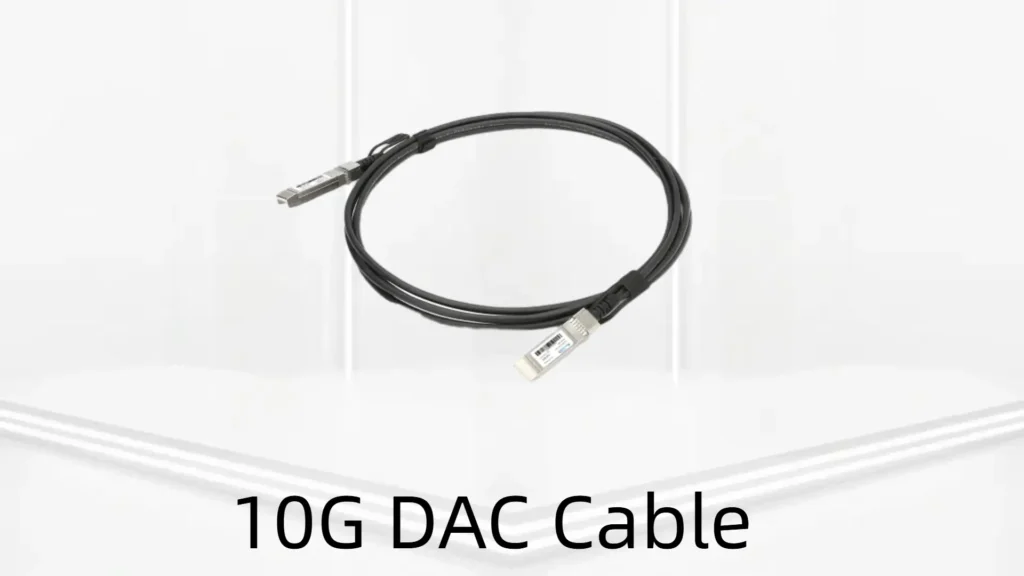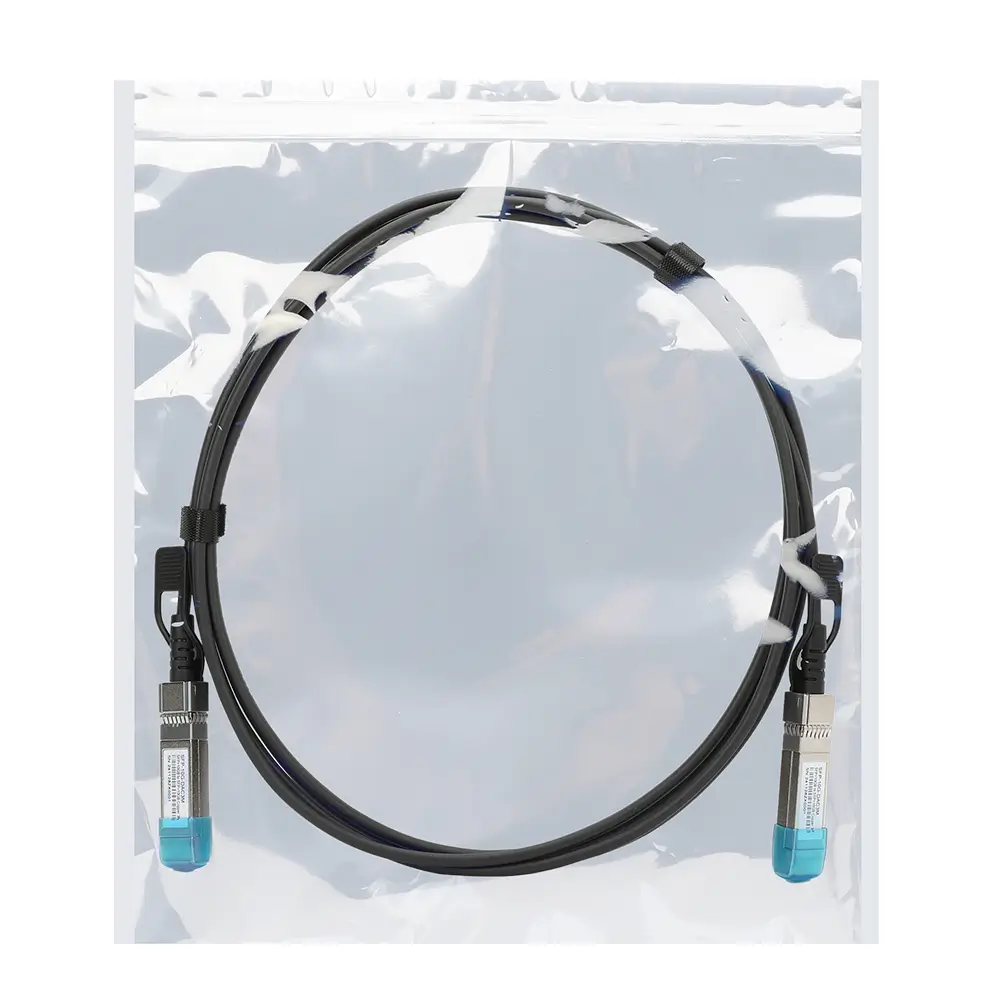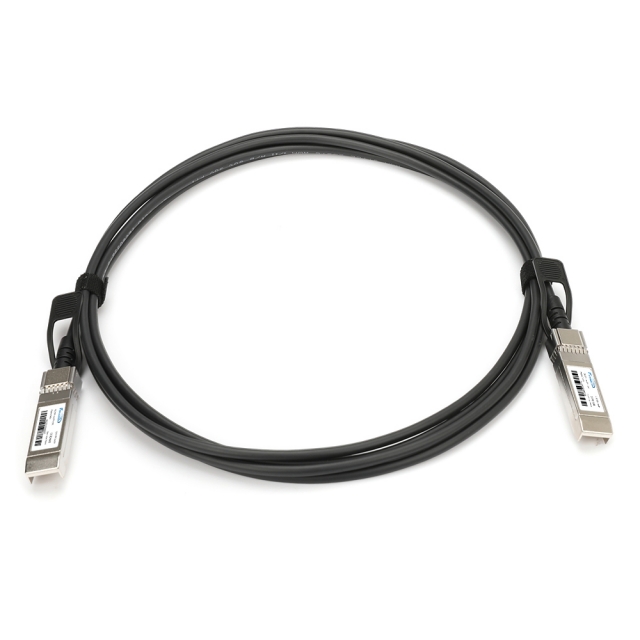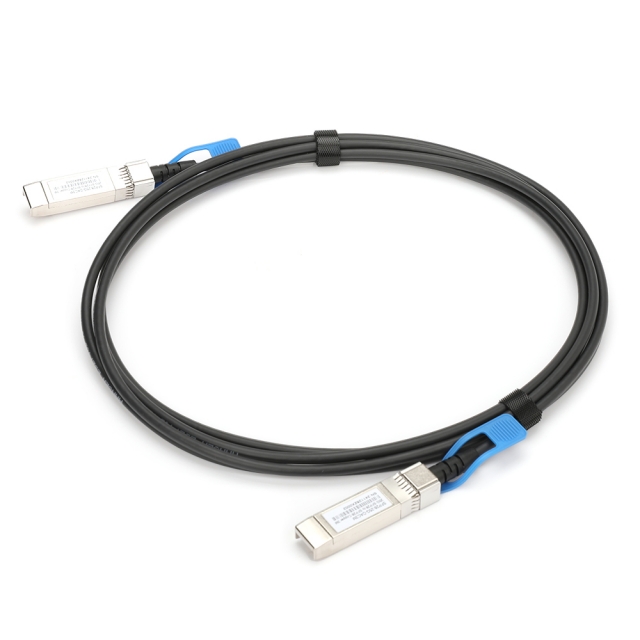Everything You Need to Know About 10G SFP+ Direct Attached Cables
Modern data centers demand ever-faster connections between servers, storage, and switches. A popular solution for short 10Gbps links is the 10G DAC cable (Direct Attach Cable). This is a twinax copper cable with SFP+ connectors on each end, plugging directly into 10 Gigabit Ethernet ports. These cables eliminate the need for separate optical transceivers and fiber patch cords, saving cost and power. They are famous for their low latency, high reliability, and cost-effectiveness, making them ideal for interconnecting servers and switches within the same rack or adjacent racks.
Many networking vendors (e.g. Fibrecross) supply 10G SFP+ DAC cables designed for 10Gb/s server-to-switch links. Below we explain what these cables are, why data centers use them, and how to select and deploy them in real-world setups.

What Is a 10G DAC Cable?
A 10G DAC cable (10 gigabit direct attach cable) is a short twinax copper link with SFP+ connectors at both ends. The “10G” denotes 10 Gigabit Ethernet speed, and “DAC” stands for Direct Attach Cable. It is sometimes also called a 10G SFP+ direct attach cable or 10G direct attach cable. These cables comply with the SFP+ (Small Form-factor Pluggable Plus) standard, so they plug into any SFP+ port on a server or switch.
Unlike fiber cables, DACs are factory-terminated copper assemblies – no lasers, optics, or field-terminated connectors are needed. Because they are pre-made and welded at the ends, installation is simple. You just plug each end into the matching ports on your devices.
Passive DAC cables rely on the copper itself to carry the signal, so they use virtually no power and produce no heat. (Active DAC cables exist too – they include signal-conditioning chips to reach longer distances – but at 10G, passive cables are most common for short runs.) In practice, passive 10G DAC cables support up to roughly 5–7 meters. Beyond that, you’d switch to an active copper cable or fiber AOC.
Key points about 10G DAC cables: They are copper twinax cables terminated with SFP+ transceivers on both ends. They come in fixed lengths (e.g. 0.5m, 1m, 3m, etc.) and are fully MSA-compliant. In a data center, any cable labeled “10G SFP+ DAC cable”, “10G DAC cable”, “10G direct attach cable”, or “SFP+ direct attach cable 10G” essentially refers to this same type of 10Gbps direct-attached copper link.
Benefits of Using 10G DAC Cables
10G DAC cables are popular in data centers because they deliver 10Gbps performance with very low cost, low power, and low latency. Their advantages include:
1. Cost-effectiveness
DAC cables eliminate the need for separate SFP+ optical transceivers and fiber patch cords. You buy just the cable assembly, not an expensive optics module. This drastically cuts hardware costs. Passive DACs are less expensive than optics and save on installation by avoiding fiber polishing or termination.
2. Low power consumption
Because passive DACs contain no active components, they draw virtually no power. Many draw less than 0.15 W and produce zero heat. In high-density environments, this power savings scales up to real operational cost reduction.
3. Minimal latency
Copper twinax cables have very low signal delay. Data flows electrically with little conversion overhead. DAC cables use differential signaling over copper pairs, which gives faster signal propagation than equivalent length fiber or RJ45 copper. A 10G DAC link has latency on the order of 0.1 microseconds — roughly 15–25 times lower than a 10GBASE-T link.
4. Plug-and-play simplicity
Since DAC cables are a single pre-terminated assembly, deployment is easy. There’s no fiber to clean or delicate transceiver module to insert – just plug the cable connectors into the SFP+ slots. They hot-swap seamlessly and are easier to manage than fiber-based links.
5. High reliability
Fewer components mean fewer failure points. With a DAC cable, you’re not dealing with multiple pieces (separate transceiver + patch cord) – it’s one unit. This translates to fewer maintenance issues and greater long-term stability in a high-performance environment.
Typical Use Cases in Data Centers
10G DAC cables are used when devices are physically close and need high-speed connections. Common data center use cases include:
Top-of-Rack (ToR) Switch to Server Links
Connecting servers to a top-of-rack switch within the same cabinet. This is the most common deployment of DAC cables.Switch-to-Switch Interconnects
Used between adjacent switches for stacking or link aggregation where distances are under 7 meters.High-Performance Server Clusters
HPC environments and clustered databases use DACs for ultra-low latency between compute nodes.Storage Array Connections
Storage controllers and drives with 10G interfaces can be connected via DACs for a clean, compact setup.Intra-Rack Fabric Links
Used to link multiple network appliances, blades, or converged infrastructure platforms within a cabinet.
Anywhere that 10Gbps ports are used within ~7 meters of each other, DAC cable 10G links offer a streamlined solution.
Choosing the Right 10G DAC Cable
When selecting a DAC cable for your deployment, consider the following:
1. Length
Most 10G DAC cables are passive and rated for 1 to 7 meters. For longer runs, consider an active DAC or optical solution. Choose a length that provides enough slack for cable routing but avoids excess coiling.
2. Connector Type
For 10G links, both ends of the cable should be SFP+ format. These are often labeled as 10G SFP+ DAC cables or SFP+ direct attach cable 10G. Ensure both devices (switch and server/NIC) support SFP+ ports.
3. Compatibility
Check with your switch or NIC vendor for supported cables. Some equipment requires brand-matched cables, while others support MSA-compliant third-party cables. Fibrecross offers high-quality DAC cables compatible with many popular network platforms.
4. Cable Quality
Look at the cable’s AWG rating (gauge), shielding, and strain relief. Thicker cables are more durable but less flexible. Ensure your selected cable is robust enough for rack handling but not overly rigid.
5. Passive vs Active
Passive DAC cables are preferred for most short runs (0.5m to 5m). For longer distances (5–10m), active DACs help maintain signal integrity, though they cost more and consume power.
Deployment Tips and Best Practices
Measure First:
Accurately measure port-to-port distance along the cable routing path. Order cables with just enough slack to avoid excess loops.Label Lengths:
Many DAC cables look alike. Mark the lengths or use color-coding to speed up troubleshooting.Use Proper Cable Management:
Route DACs neatly with Velcro ties or cable trays. Avoid kinks or tight bends that stress the twinax.Check Link Status:
After installation, verify both ports link at 10G and that no errors are detected. Use diagnostics or simple ping/throughput tests.Keep Spares:
Stock common lengths like 1m, 3m, and 5m in your spares inventory for rapid swaps or reconfiguration.Document Connections:
Maintain updated cabling maps and diagrams. Even in small racks, clear documentation reduces downtime during changes.
Conclusion
10G DAC cables remain a practical, cost-effective solution for high-speed, short-range connections in data centers. They enable 10 Gigabit Ethernet links between servers and switches with minimal hardware overhead, low latency, and low power use.
By understanding their capabilities and limitations – and by choosing the right cable lengths and types – data center teams can leverage 10G SFP+ DAC cables to boost efficiency. For example, linking top-of-rack switches to servers over copper can eliminate transceivers and still deliver full 10Gbps throughput.
Well-built 10G SFP+ DAC cables are a mature, reliable technology. Quality products from vendors like Fibrecross ensure that these cables meet industry standards and are compatible with leading network gear. When properly planned and managed, deploying 10G DAC cables helps data centers maximize bandwidth while keeping costs and power budgets in check – a win for performance and efficiency in any high-density network environment.
FAQ Abaout 10G SFP+ DAC Cable
A 10G DAC cable is a twinax copper assembly with SFP+ connectors on each end, providing a direct-attached 10 Gbps link. It’s most commonly used for short-range connections—such as server-to-switch and adjacent rack links—where high speed, low latency, and low power are essential.
Yes. A 10G SFP+ DAC cable is versatile enough to connect servers to ToR switches as well as to interconnect switches in adjacent racks, delivering efficient 10 Gbps performance without the need for optical transceivers.
A 10G direct attach cable provides lower latency, near-zero power consumption, and significantly reduced hardware costs because it eliminates separate transceivers and fiber patch cords—perfect for links under 7 meters in data centers.
By offering plug-and-play simplicity, minimal heat generation, and fewer points of failure, 10G SFP+ direct attach cables streamline deployment and maintenance. They’re ideal for high-density environments where cost, power, and space are at a premium.





